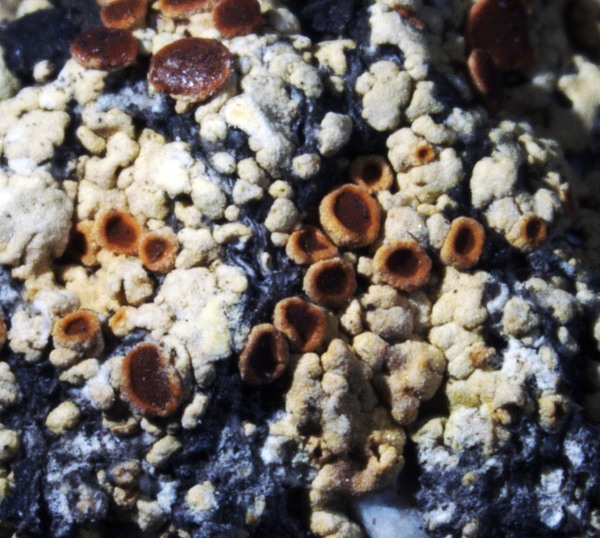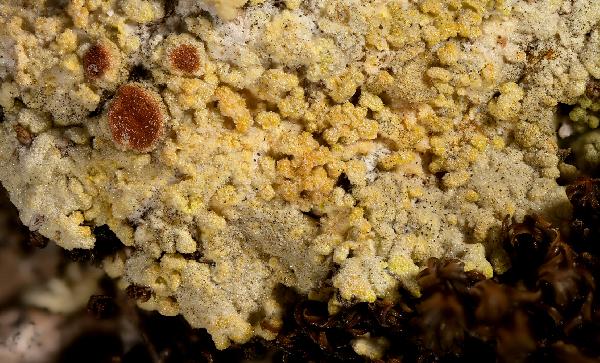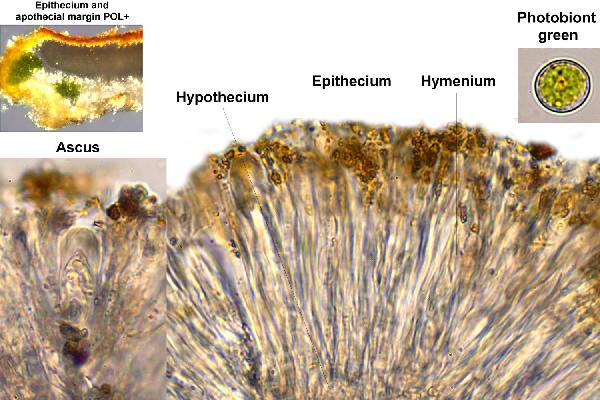Gyalolechia subbracteata (Nyl.) Søchting, Frödén & Arup
in Arup & al., Nord. J. Bot., 31: 72, 2013. Basionym: Lecanora subbracteata Nyl. - Flora, 66: 534, 1883.
Synonyms: Caloplaca subbracteata (Nyl.) Lettau; Fulgensia subbracteata (Nyl.) Poelt
Distribution: N - VG (TSB 23280), Ven (Thor & Nascimbene 2007), TAA, Piem (Clerc & al. 1999), Emil (Scarpa 1993, Nimis & al. 1996, Fariselli & al. 2020), Lig (Westberg & Kaernefelt 1998, Valcuvia & al. 2000). - Tosc (Tretiach & al. 2008), Marc (Nimis & Tretiach 1999), Umb (Nimis & Tretiach 1999, Ravera & al. 2006, Panfili 2007), Laz, Abr (Nimis & Tretiach 1999, Brackel 2015, Gheza & al. 2021), Mol (Nimis & Tretiach 1999, Caporale & al. 2008, Sar. S - Camp (Aprile & al. 2002, 2003b, Nimis & Tretiach 2004), Pugl (Nimis & Tretiach 1999), Bas (Nimis & Tretiach 1999, Brackel 2011), Cal (Puntillo 1996), Si (Nimis & al. 1994, 1996b, Ottonello & al. 1994, 2011, Ottonello 1996, Ottonello & Romano 1997, Gianguzzi & al. 2009, Cataldo & Minissale 2013, 2015).
Description: Thallus crustose-placodioid, episubstratic, yellow to orange-yellow, sometimes yellowish-white-pruinose, with radiating marginal lobes, the centre verrucose-areolate, forming orbicular to irregular, to 3-4 cm wide, often confluent rosettes. Lobes 0.5-1 mm broad and to 3 mm long, flattened, contiguous, radiating from the central part of thallus, which is densely covered in flattened, often elongate and lobe-like schizidia. Apothecia rare, lecanorine, sessile, 0.5-1.2 mm across, with an orange to brownish-orange, flat, smooth disc, and a thin, orange-yellow margin which at maturity separates into an internal, darker and thinner proper margin, and an external, paler thalline margin. Epithecium orange-brown, K+ red; hymenium colourless, 60-70 µm thick. Asci 8-spored, clavate, functionally unitunicate, apically thickened with a broad internal beak, the inner part of apex and external cap I+ blue, Teloschistes-type. Ascospores 1-celled, hyaline, ovoid to slightly pyriform, thin-walled, 9-12 x 3.5-5 µm. Pycnidia orange-yellow, immersed. Conidia narrowly ellipsoid. Photobiont chlorococcoid. Spot tests: thallus and apothecia K+ red, C-, KC-, P-, UV+ pale orange. Chemistry: fragilin dominant, with smaller amounts of emodin and parietin and other anthraquinones (minor).Note: on calciferous ground, in clearings of grasslands and scrublands, with optimum in the Mediterranean belt. A critical taxon, characterized by schizidia, which, however, also occur in other related species. According to Roux & coll. (2014), it cannot be separated from G. fulgens, the schizidia being just a re-generation form from damages to the thallus, but according to Vondrák (in litt.), molecular data show that the two taxa are distinct.
Growth form: Crustose placodiomorph
Substrata: soil, terricolous mosses, and plant debris
Photobiont: green algae other than Trentepohlia
Reproductive strategy: mainly asexual, by isidia, or isidia-like structures (e.g. schizidia)
Poorly known taxon in need of further study
Commonnes-rarity: (info)
Alpine belt: absent
Subalpine belt: absent
Oromediterranean belt: absent
Montane belt: rather rare
Submediterranean belt: rather common
Padanian area: absent
Humid submediterranean belt: common
Humid mediterranean belt: common
Dry mediterranean belt: rather common
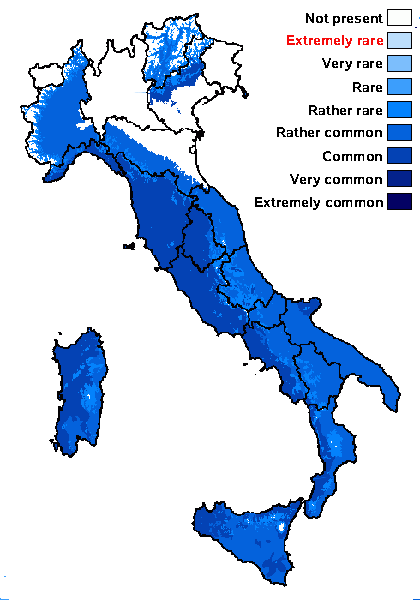
Predictive model
Herbarium samples
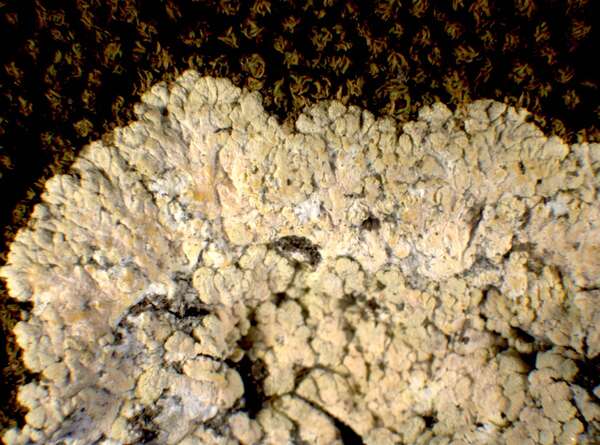

P.L. Nimis; Owner: Department of Life Sciences, University of Trieste
Herbarium: TSB (31739)
2001/12/08


P.L. Nimis; Owner: Department of Life Sciences, University of Trieste
Herbarium: TSB (31739)
2001/12/08
schizidia
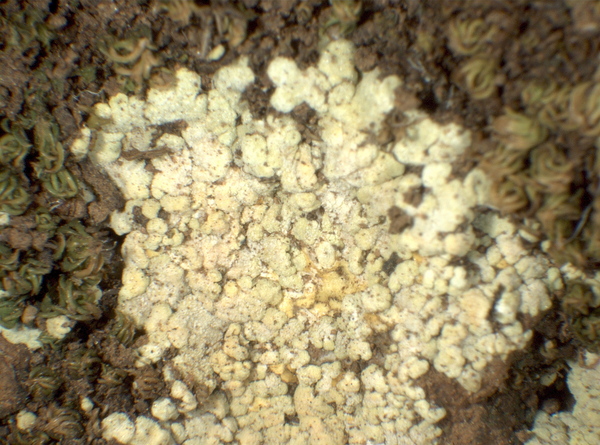

P.L.Nimis; Owner: Department of Life Sciences, University of Trieste
Herbarium: TSB (38243)
2008.02.25
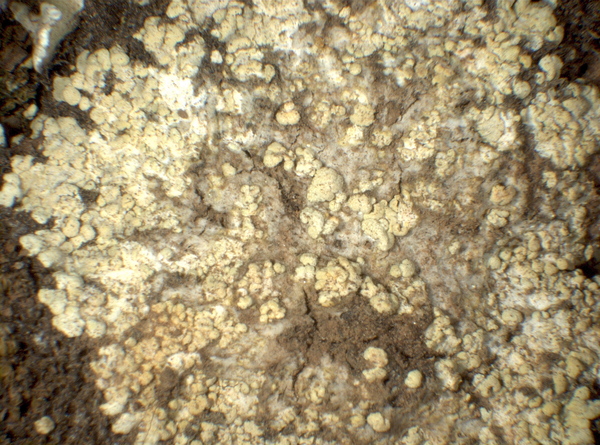

P.L.Nimis; Owner: Department of Life Sciences, University of Trieste
Herbarium: TSB (38243)
2008.02.25


Felix Schumm – CC BY-SA 4.0
[16315], Mallorca (Süd): Zwischen San Marina und La Lova des Llatres, lichtoffener Straßenrand; 39,39117° N, 2,76329° E, 100 m. Leg. Schumm, Frahm & Lüth, 12.03.2010, det. Schumm 2010.
as Fulgensia desertorum
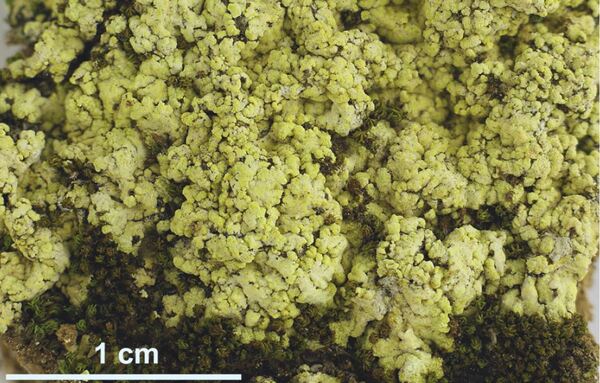

Felix Schumm – CC BY-SA 4.0
[16315], Mallorca (Süd): Zwischen San Marina und La Lova des Llatres, lichtoffener Straßenrand; 39,39117° N, 2,76329° E, 100 m. Leg. Schumm, Frahm & Lüth, 12.03.2010, det. Schumm 2010.
as Fulgensia desertorum

Ulrich Kirschbaum CC BY-SA 4.0 - Source: https://www.thm.de/lse/ulrich-kirschbaum/flechtenbilder
On calcareous soil.
E; Canary Islands; La Gomera-NNW: hiking path between Playa de Vallehermoso and M. Alcala (Buenavista).

Ulrich Kirschbaum CC BY-SA 4.0 - Source: https://www.thm.de/lse/ulrich-kirschbaum/flechtenbilder
On calcareous soil.
E; Canary Islands; La Gomera-NNW: hiking path between Playa de Vallehermoso and M. Alcala (Buenavista).

Ulrich Kirschbaum CC BY-SA 4.0 - Source: https://www.thm.de/lse/ulrich-kirschbaum/flechtenbilder
On calcareous soil.
E; Canary Islands; La Gomera-NNW: hiking path between Playa de Vallehermoso and M. Alcala (Buenavista).
Growth form: Crustose placodiomorph
Substrata: soil, terricolous mosses, and plant debris
Photobiont: green algae other than Trentepohlia
Reproductive strategy: mainly asexual, by isidia, or isidia-like structures (e.g. schizidia)
Poorly known taxon in need of further study
Commonnes-rarity: (info)
Alpine belt: absent
Subalpine belt: absent
Oromediterranean belt: absent
Montane belt: rather rare
Submediterranean belt: rather common
Padanian area: absent
Humid submediterranean belt: common
Humid mediterranean belt: common
Dry mediterranean belt: rather common

Predictive model
| Herbarium samples |


P.L. Nimis; Owner: Department of Life Sciences, University of Trieste
Herbarium: TSB (31739)
2001/12/08


P.L. Nimis; Owner: Department of Life Sciences, University of Trieste
Herbarium: TSB (31739)
2001/12/08
schizidia


P.L.Nimis; Owner: Department of Life Sciences, University of Trieste
Herbarium: TSB (38243)
2008.02.25


P.L.Nimis; Owner: Department of Life Sciences, University of Trieste
Herbarium: TSB (38243)
2008.02.25


Felix Schumm – CC BY-SA 4.0
[16315], Mallorca (Süd): Zwischen San Marina und La Lova des Llatres, lichtoffener Straßenrand; 39,39117° N, 2,76329° E, 100 m. Leg. Schumm, Frahm & Lüth, 12.03.2010, det. Schumm 2010.
as Fulgensia desertorum


Felix Schumm – CC BY-SA 4.0
[16315], Mallorca (Süd): Zwischen San Marina und La Lova des Llatres, lichtoffener Straßenrand; 39,39117° N, 2,76329° E, 100 m. Leg. Schumm, Frahm & Lüth, 12.03.2010, det. Schumm 2010.
as Fulgensia desertorum

Ulrich Kirschbaum CC BY-SA 4.0 - Source: https://www.thm.de/lse/ulrich-kirschbaum/flechtenbilder
On calcareous soil. E; Canary Islands; La Gomera-NNW: hiking path between Playa de Vallehermoso and M. Alcala (Buenavista).

Ulrich Kirschbaum CC BY-SA 4.0 - Source: https://www.thm.de/lse/ulrich-kirschbaum/flechtenbilder
On calcareous soil. E; Canary Islands; La Gomera-NNW: hiking path between Playa de Vallehermoso and M. Alcala (Buenavista).

 Index Fungorum
Index Fungorum
 GBIF
GBIF
